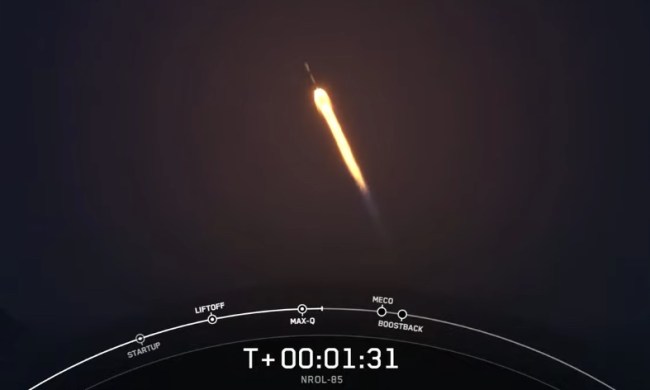Update: Mission success! In addition to safely delivering Quatar’s Es’hail-2 satellite into geostationary orbit, SpaceX also managed to recover the Falcon 9 rocket’s first stage booster, landing it smack in the middle of SpaceX’s drone ship landing pad, Of Course I Still Love You. This marks the 18th launch that SpaceX has completed this year, which ties the company’s 2017 record, and puts it on pace to break that record before 2018 is over. If Musk and his rocketeers stick with their ambitious launch schedule, they could send another four rockets into space this year.
Original article: SpaceX is due to perform its latest rocket launch and landing this afternoon. The rocket in question is one of SpaceX’s used Falcon 9 rockets. It will be employed to launch Qatar’s Es’hail-2 communications satellite, which will be provide communications for the Middle East and parts of North Africa. The satellite will also carry amateur radio equipment for use by the global amateur satellite radio community.
Falcon 9 will put the Es’hail-2 satellite into geosynchronous transfer orbit, after which the satellite will head to its final location in geostationary orbit using its own power.
The SpaceX launch is due to take place between 3:46 p.m. and 5:29 p.m. ET, although there is a chance this launch time could get pushed back if weather is not optimal for it to take place. There is a bit of history tied to this launch event. Liftoff will be from Launch Pad 39A at NASA’s Kennedy Space Center in Cape Canaveral, Florida, the same launch pad where the first manned missions to orbit and land on the Moon took place. The Falcon 9 first-stage booster will then land on SpaceX’s drone ship “Of Course I Still Love You” several miles out in the Atlantic Ocean.
SpaceX’s innovative Falcon 9 rocket first took to the skies in 2010. This will be its 63rd launch, and SpaceX’s 18th overall launch in 2018, in what should prove to be its busiest year yet when all is said and done.
Earlier this year, the so-called Block 5 iteration of Falcon 9 was introduced. The advantage of this version of the Falcon 9 rocket is that it can make more than two launches before being put out to pasture. This particular Falcon 9 rocket booster was previously used on July 22, when it lifted off from the Cape Canaveral Air Force Station carrying the Telstar 19 VANTAGE communications satellite.
As per usual, SpaceX will livestream today’s launch. Their coverage will go live 15 minutes prior to the launch. You can watch it here. This is the first Falcon 9 daytime launch to take place in six months. Hopefully, it will prove to be another triumph for SpaceX. We will certainly be tuning in to watch the action. Will you?


